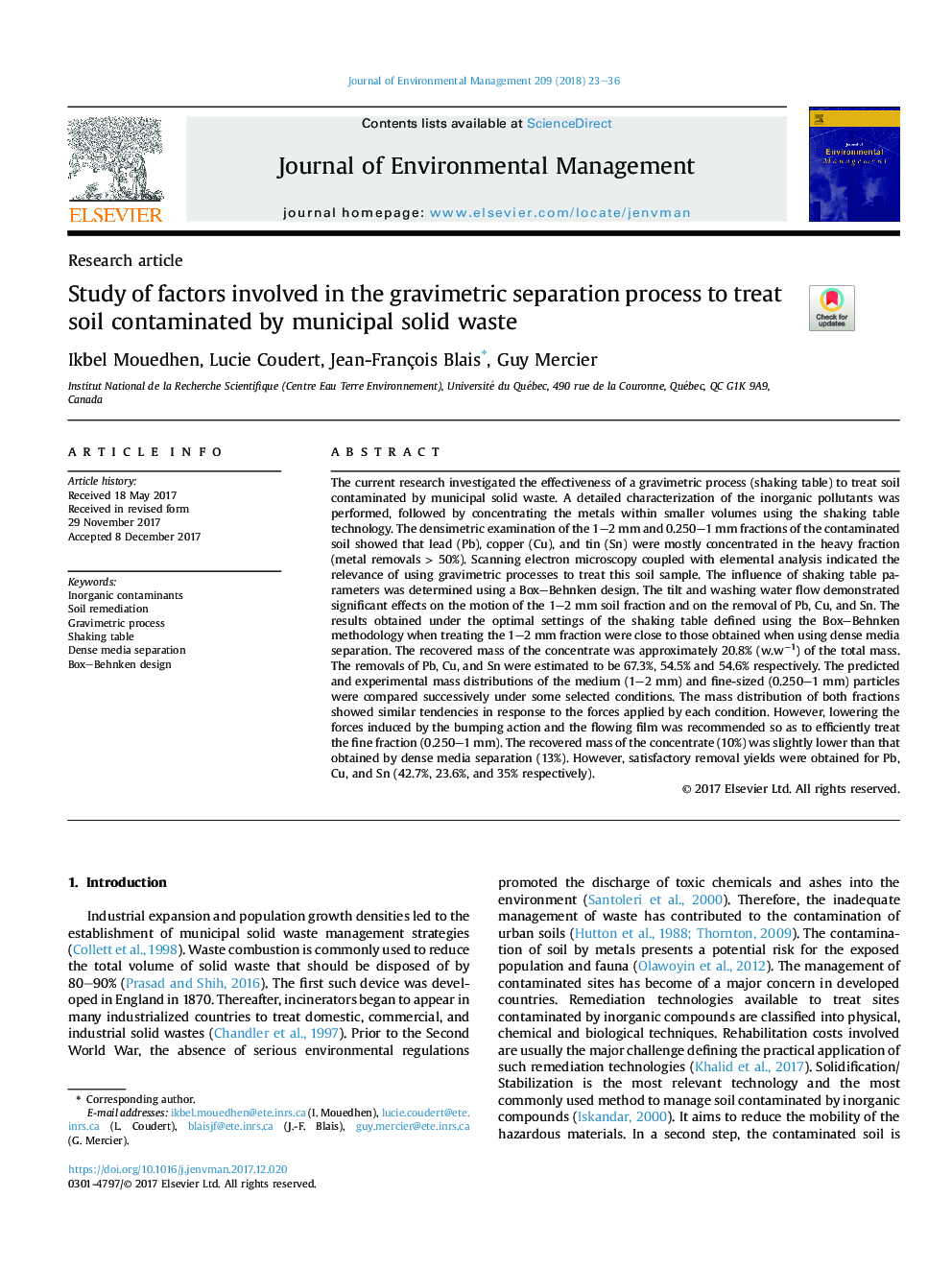| Article ID | Journal | Published Year | Pages | File Type |
|---|---|---|---|---|
| 7478100 | Journal of Environmental Management | 2018 | 14 Pages |
Abstract
The current research investigated the effectiveness of a gravimetric process (shaking table) to treat soil contaminated by municipal solid waste. A detailed characterization of the inorganic pollutants was performed, followed by concentrating the metals within smaller volumes using the shaking table technology. The densimetric examination of the 1-2 mm and 0.250-1 mm fractions of the contaminated soil showed that lead (Pb), copper (Cu), and tin (Sn) were mostly concentrated in the heavy fraction (metal removals > 50%). Scanning electron microscopy coupled with elemental analysis indicated the relevance of using gravimetric processes to treat this soil sample. The influence of shaking table parameters was determined using a Box-Behnken design. The tilt and washing water flow demonstrated significant effects on the motion of the 1-2 mm soil fraction and on the removal of Pb, Cu, and Sn. The results obtained under the optimal settings of the shaking table defined using the Box-Behnken methodology when treating the 1-2 mm fraction were close to those obtained when using dense media separation. The recovered mass of the concentrate was approximately 20.8% (w.wâ1) of the total mass. The removals of Pb, Cu, and Sn were estimated to be 67.3%, 54.5% and 54.6% respectively. The predicted and experimental mass distributions of the medium (1-2 mm) and fine-sized (0.250-1 mm) particles were compared successively under some selected conditions. The mass distribution of both fractions showed similar tendencies in response to the forces applied by each condition. However, lowering the forces induced by the bumping action and the flowing film was recommended so as to efficiently treat the fine fraction (0.250-1 mm). The recovered mass of the concentrate (10%) was slightly lower than that obtained by dense media separation (13%). However, satisfactory removal yields were obtained for Pb, Cu, and Sn (42.7%, 23.6%, and 35% respectively).
Related Topics
Physical Sciences and Engineering
Energy
Renewable Energy, Sustainability and the Environment
Authors
Ikbel Mouedhen, Lucie Coudert, Jean-François Blais, Guy Mercier,
